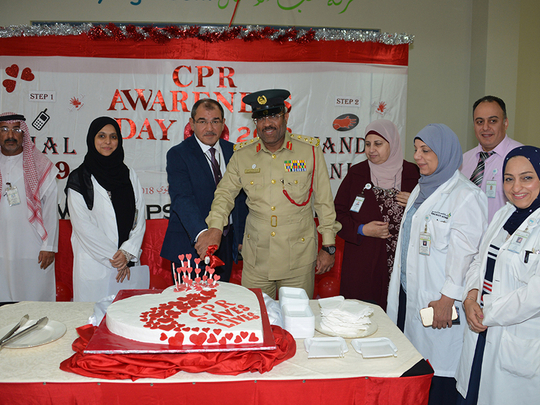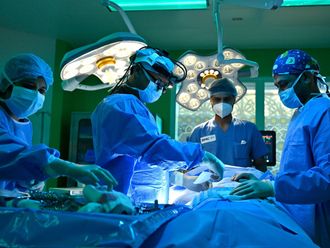
DHA’s International Training Centre launched a Hands-Only CPR Awareness campaign across Dubai for the public in light of March being the Heart saver month in the Middle East and North Africa.
The campaign, which will take place from March 4–29 across all DHA facilities, schools and other locations recently took place at Latifa Women and Children Hospital in collaboration with the hospital’s Critical Care Committee.
Potentially life-saving
The event, which was inaugurated by Brigadier Abdullah Khadim Surour, Director of Bur Dubai Police, focused on training the public on recognising emergencies as they could be the first responders to the victim in need and how to perform Cardiopulmonary Resuscitation (CPR) so that the victim’s survival rates can double or triple.
Dr Mahmoud El-Halik, Head of Paediatrics and Neonatology at Latifa Hospital and Chairman of the hospital’s Critical Care Committee, says reaching out to the community to share these vital and simple steps could help save a life.
He emphasises the importance of this campaign, which was organised in collaboration with the Medical Education Department at DHA. According to international studies, every minute CPR is delayed, a person’s chance of survival decreases 10 per cent. When ordinary people — not just healthcare providers — start CPR, that person’s survival rate can double or even triple.
Participants in the campaign include children and adults from BUDS School, Holy Trinity Church, Tamil CSI Church, WadeAdams Contracting and Rayoman International.
Every second counts
Bindu Misbahudeen, Senior Training officer at DHA and Regional Trainer for the American Heart Association, says that during cardiac arrest, every second counts.
“Also, an obstructed airway such as in a choking incident can lead to cardiac arrest and death if left without help.”
Misbahudeen explains that through the campaign, the authority wants to raise awareness that the first thing the public should do when a person stops breathing is to call 999 and the next is to perform hands-only CPR.
For Misbahudeen, learning this skill is important as many cardiac arrests happen outside a hospital — such as at home, at work or elsewhere.
“The more people became aware about what to do for cases of sudden cardiac arrest, the more lives could be saved,” she says.
Cardiac arrest is the leading cause of death and hands-only CPR can save people’s lives. In the US, 40 per cent of 360,000 people who had cardiac arrest received CPR from bystanders. Out of the 40 per cent, 10 per cent survived.
To perform hands-only CPR, the person administering should continue pushing hard and fast in the centre of the chest 100 to 120 times per minute until help arrives.











